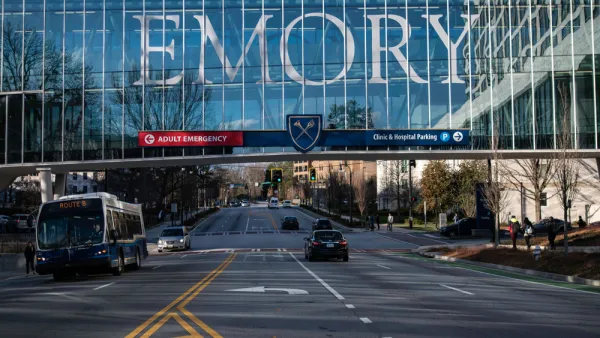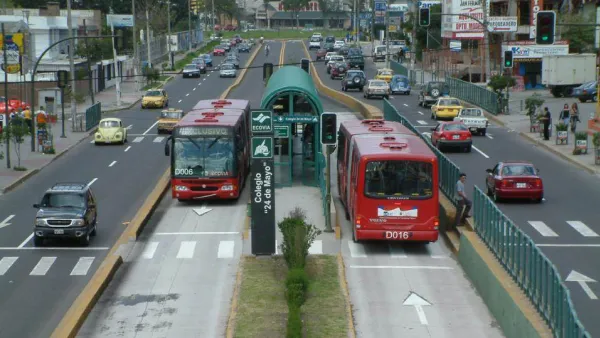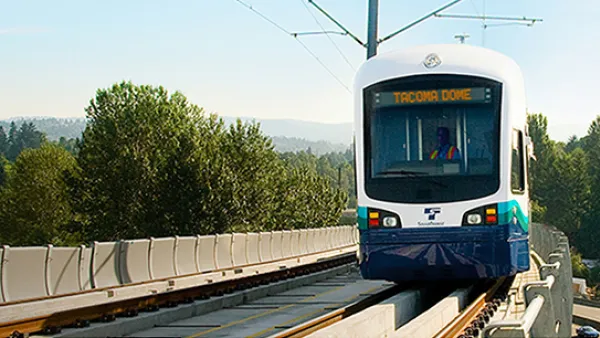A recent study by the World Resources Institute for Maryland's upcoming Purple Line project sided with BRT. WorldChanging asks researchers Greg Fuhs and Dario Hidalgo how they came to side with buses.
JL: Although your report shows that BRT will cost about half the amount of a light rail system, other studies show that light rail systems, because they are permanent structures, do more to encourage transit-oriented development. Was TOD a factor in the EMBARQ study? Do you think that BRT can facilitate and encourage dense development at a similar level?
GF: We did not look specifically at the TOD factor in our study. However, one cannot assume that transit-oriented development would be sparked by light rail but not BRT. For example, a recent study by the American Public Transportation Association looking at this issue considers both rail and traditional bus systems (although unfortunately it does not look at BRT specifically), and indicates that both can lead to significant positive land use changes. In any case, there is no reason to assume that LRT has a greater impact on land use than high-quality BRT if the systems provide similar travel times, capacities, and overall quality of service, as would be the case for the Purple Line. Moreover, developers can benefit from the shorter implementation time that BRT projects bring as compared to LRT.
DH: Also, regarding permanence, this is a somewhat relative concept. For example, there were thousands of miles of tram networks in the U.S. by 1940; much of this system was dismantled before 1970 with the rise of the automobile and suburbia. The forces behind development are not limited to the technology of transit vehicles, but also depend on factors such as accessibility, enabling policies, and background economics.
FULL STORY: Worldchanging Interview: WRI on Bus Rapid Transit v. Light Rail

National Parks Layoffs Will Cause Communities to Lose Billions
Thousands of essential park workers were laid off this week, just before the busy spring break season.

Retro-silient?: America’s First “Eco-burb,” The Woodlands Turns 50
A master-planned community north of Houston offers lessons on green infrastructure and resilient design, but falls short of its founder’s lofty affordability and walkability goals.

Delivering for America Plan Will Downgrade Mail Service in at Least 49.5 Percent of Zip Codes
Republican and Democrat lawmakers criticize the plan for its disproportionate negative impact on rural communities.

Test News Post 1
This is a summary

Test News Headline 46
Test for the image on the front page.

Balancing Bombs and Butterflies: How the National Guard Protects a Rare Species
The National Guard at Fort Indiantown Gap uses GIS technology and land management strategies to balance military training with conservation efforts, ensuring the survival of the rare eastern regal fritillary butterfly.
Urban Design for Planners 1: Software Tools
This six-course series explores essential urban design concepts using open source software and equips planners with the tools they need to participate fully in the urban design process.
Planning for Universal Design
Learn the tools for implementing Universal Design in planning regulations.
EMC Planning Group, Inc.
Planetizen
Planetizen
Mpact (formerly Rail~Volution)
Great Falls Development Authority, Inc.
HUDs Office of Policy Development and Research
NYU Wagner Graduate School of Public Service





























